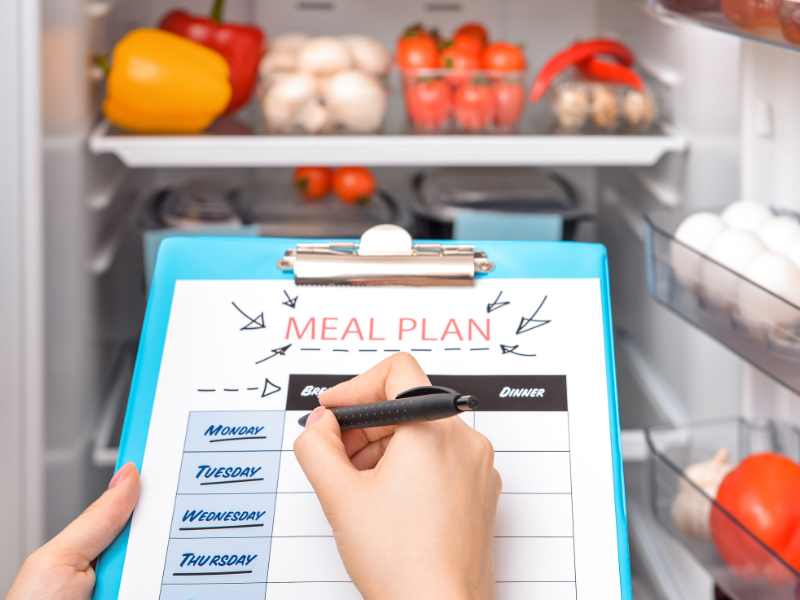
My menu forms the foundation of an easy plan for improving our health. I like keeping things simple and avoiding extra work, which is exactly what a menu does for me.
Here are the secrets to a great menu:
M – Make My Menu Ahead
If I wander into the kitchen, searching for food after I’m already quite hungry and tired, it’s highly unlikely that I’ll choose nutrient-dense foods. If I try to decide what I’m going to make for supper only minutes before I am planning to eat, it’s unlikely I’ll have the energy to make my food from scratch. This is why I have to get in the habit of making a menu ahead of time.
E – Eat Simple Foods
I try to choose foods that can be prepared and into a cooking dish in 10-20 minutes. Just before eating, I’ll spend a final 10 minutes or so in the kitchen. I can’t always accomplish this, but for the sake of my energy levels, I keep things as simple as possible. This also means that I try to use sauces for several meals each week and to incorporate leftovers into future meals. When I’m tired, boring is just fine; complicated is what I try to avoid. Making food taste good can be easy, even when my menu is simple.
N – No Bite Wasted
Food needs to be very rich in nutrients so that my body has the building blocks it needs for repair, both today and long into the future. In addition, many tired people lack much of an appetite, except for junk food like sweet or salty snacks. Therefore, my menu needs to make every bite count. If I put something into my mouth, it must serve a purpose – or else I shouldn’t eat it.
U – Use My Menu Again
At the end of the week, I put my “Menu” back into my “Kitchen Binder,” so I can use it for ideas in the future. My “Kitchen Binder” now holds several years’ worth of menus, with ideas of foods I can enjoy by season, holiday, and even times of budgetary highs-and-lows. Th
This is the habit I use to plan my menu:
1. Every few months, I print blank menu sheets. I punch holes in them and store them in my “Kitchen Binder,” a thick, 3-ring binder that permanently sits on top of my refrigerator.
2. On Monday morning, I take an empty menu sheet out of my “Kitchen Binder” and sit down to plan what we’ll eat that week.
3. To get ideas, I look at previous menus, choose a cookbook to use that week, or search for recipes online that sound good to me (emailing myself a copy of each recipe).
4. I don’t like having to think too much, so I repeat broad categories on certain days of the week. Breakfast, lunch, and snacks stay fairly constant in my home. I just don’t have the energy to re-invent the wheel each week!
Sunday – Beef Pot Roast
Monday – Beef
Tuesday – Chicken
Wednesday – Mexican
Thursday – Something New
Friday – Pizza
Saturday – Crockpot
5. If I see that I’ll have to prepare foods ahead of time, I write that on my menu as well.
6. I quickly make a shopping list from my menu.
During the week, my menu hangs on the side of my refrigerator, where I can easily see it. At the end of the week, it goes back into my “Kitchen Binder,” ready to be used for ideas someday.
What ideas do you use when planning a menu?
![]()
P.S. This post is an excerpt from my book called Too Tired: A Comprehensive Look at Fatigue in Women & What to Do About It. This book has lots of great ideas on how to eat simply and easily. Learn more here…
What wonderful ideas! Thank you for sharing!
Joycelyn